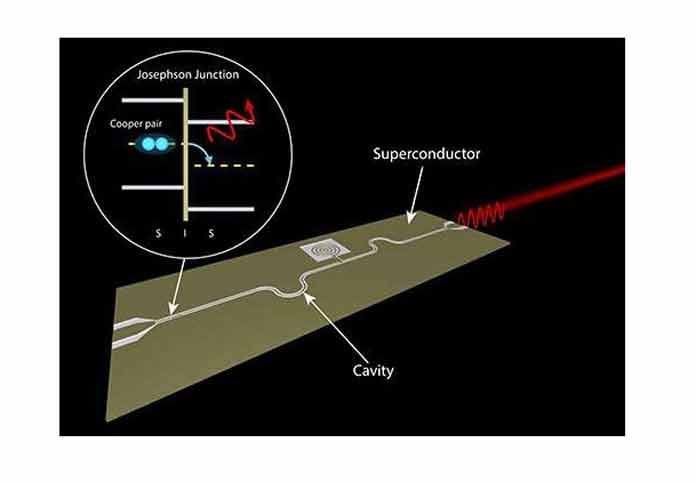Lasers now have increasingly gained importance in various fields. For example, in industry, telecommunication, and medicine. But most of the lasers that are now been used are so bulky that quantum scientists cannot use it at low temperatures and on very small scales. From more than 4 decades, they have searched for efficient and precise microwave lasers.
And now, their huge effort now coming in reality. A group of scientists has discovered a whole new type of on-chip microwave laser. This new kind of laser does not create any distraction for quantum scientists in very cold environment.
Scientists developed this on-chip microwave laser based on the basic property of superconductivity- the AC Josephson Effect. The AC Josephson Effect is the transition of some materials to a superconducting state at very low temperatures. It allows electric current to flow without any loss of energy.
Scientists involved a small section of an interrupted superconductor, a Josephson junction, in a carefully engineered on-chip cavity.
Research led Leo Kouwenhoven at TU said, “Lasers have the unique ability to emit perfectly synchronized, coherent light. This means that the linewidth is very narrow. Typically lasers are made from a large number of emitters inside a cavity. These conventional lasers are often inefficient and dissipate a lot of heat while lasing. This makes them difficult to operate in cryogenic environments, such as what is required for operating a quantum computer.”
Scientists coupled a single Josephson junction to a high-quality factor superconducting micro-cavity. The Josephson junction acts like a single atom, whereas cavity is seen as two mirrors for microwave light. When scientists applied some DC voltage to the junction, it starts emitting microwave photons. These photons move back and forth between two superconducting mirrors. It then forces the junction to emit more photons synchronized with the photons in the cavity.
Scientists observed that a coherent beam of microwave photons emitted at the output of the cavity. This happens due to this on- chip microwave laser that is made from superconductors.
Scientists reported, “It is very energy efficient and more stable than previously demonstrated semiconductor-based lasers. The laser uses less than a picoWatt of power to run, more than 100 billion times less than a light globe.”
Now scientists extending their design to use tunable Josephson junctions made from nanowires to allow for microwave burst for fast control of multiple quantum components.
They said, “In the future, such a device may be able to generate so-called “amplitude-squeezed” light. It will have smaller intensity fluctuations compared to conventional lasers. This is essential in most quantum communication protocols.”
